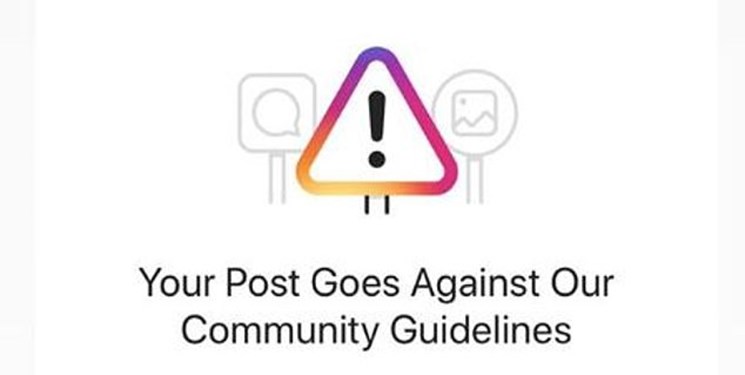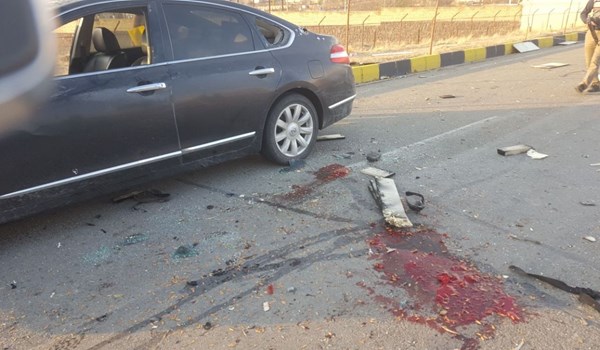Zionist Puppet Instagram Removes Posts Supporting Martyred Iranian N. Scientist
Instagram is removing posts that voice support for the assassinated Iranian nuclear scientist Mohsen Fakhrizadeh.

Social media activists voiced anger over Instagram’s biased move to remove posts which show regret for the martyrdom or support Fakhrizadeh.
Fakhrizadeh’s car was targeted by an explosion and machinegun fire in Damavand’s Absard 40 kilometers to the East of Tehran on Friday.

Iranian nuclear scientist Mohsen Fakhrizadeh
The nuclear scientist and one of his companions were immediately taken to a nearby hospital but he could not be saved.
Eyewitness accounts confirmed that Fakhrizadeh’s car came under attack first by a blast and then by terrorists who sprayed bullets at his car.

Early in 2018, the Israeli sources had acknowledged that Mossad had tried to assassinate an Iranian nuclear scientist, but its operation failed.
According to Fars News Agency, Mossad had gained access to Fakhrizadeh’s name via a UN list which referred to him as a senior scientist of Iran’s Defense Ministry’s Physics Research Center.
In a similar move in January 2020, the American photo- and video-sharing platform, Instagram, had also purged against the users reacting to the US assassination of Iranian anti-terrorism struggle icon Lieutenant General Qassem Soleimani.
Instagram had either deleted the accounts belonging to many Iranians, who were using the social networking service to communicate their devastation at the tragedy, or eliminated relevant content posted by them.
Lieutenant General Soleimani was assassinated in a US drone strike on Baghdad International Airport in Iraq on January 3, 2020.
The airstrike also martyred deputy commander of Iraq’s Popular Mobilization Forces Abu Mahdi al-Muhandis. The two were martyred in an American airstrike that targeted their vehicle on the road to the airport.
Five Iranian and five Iraqi military men were martyred by the missiles fired by the US drone at Baghdad International Airport.
On January 8 and after the funeral ceremony of General Soleimani, the IRGC Aerospace Force started heavy ballistic missile attacks on US Ein Al-Assad airbase in Southwestern Iraq near the border with Syria and a US operated airbase in Erbil in retaliation for the US assassination of General Soleimani.
Ein Al-Assad is an airbase with a 4km runway at 188m altitude from sea levels, which is the main and the largest US airbase in Iraq. Early reports said the radar systems and missile defense shields in Ein Al-Assad failed to operate and intercept the Iranian missiles. Unofficial reports said the US army’s central radar systems at Ein Al-Assad had been jammed by electronic warfare.
The second IRGC reprisal attack targeted a US military base near Erbil airport in Iraqi Kurdistan Region in the second leg of “Martyr Soleimani” reprisal operation.
Iraq said the attacks had not taken any toll from its army men stationed at these two bases. The US army had blocked entrance into Ein Al-Assad to everyone, including the Iraqi army.
The IRGC officials said none of the missiles had been intercepted.
Meantime, Iran announced in late June that it had issued arrest warrants for 36 officials of the US and other countries who have been involved in the assassination of the martyred General Soleimani.
“36 individuals who have been involved or ordered the assassination of Hajj Qassem, including the political and military officials of the US and other governments, have been identified and arrest warrants have been issued for them by the judiciary officials and red alerts have also been issued for them via the Interpol,” Prosecutor-General of Tehran Ali Alqasi Mehr said.
He said that the prosecuted individuals are accused of murder and terrorist action, adding that US President Donald Trump stands at the top of the list and will be prosecuted as soon as he stands down presidency after his term ends.







